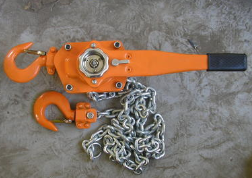




Hand cranked hoists are composed of dozens of closely packed components, each of which plays an important role in the operation of the hoist. If the hoist is subjected to high loads for a long time, its internal components will inevitably wear down, thereby reducing its service life and smoothness of use. Therefore, we need to pay attention to the non working state of the hoist.

As is well known, the hand-operated hoist has three gears, which are up, down, and neutral. When the block is turned up and the handle is pulled, an upward lifting operation will be carried out. If the block is turned down, the handle will be pulled, and the lifting chain will be in a downward state. If we turn the block to neutral, the chain will completely lose its load and its length can be adjusted arbitrarily.
In addition to using the manual hoist, you can shift the shift block to the neutral position. Although there is no need to adjust the chain at this time, reducing its load is also a means of resting it, which can effectively reduce the metal fatigue of the manual hoist and indirectly improve its service life.